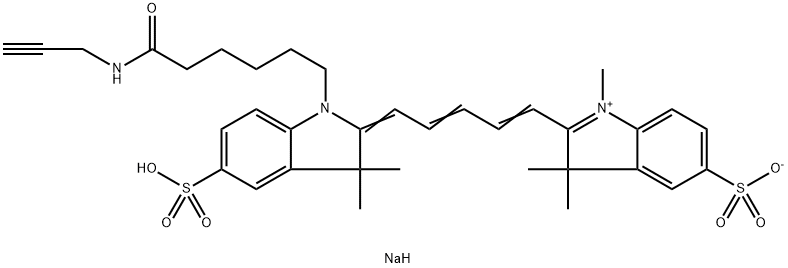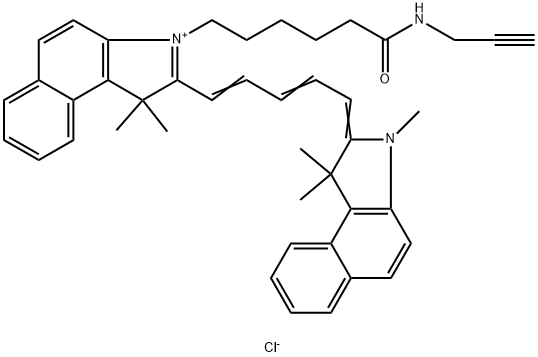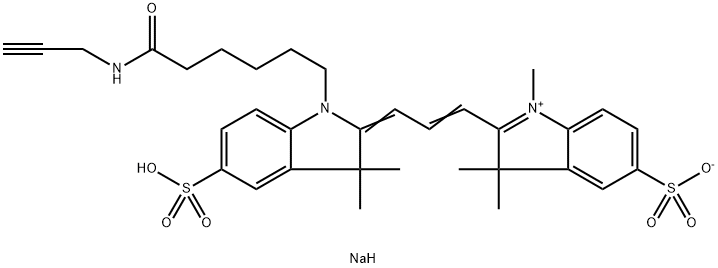15-hexadecynoic acid
Synonym(s):15-hexadecynoic acid
- CAS NO.:99208-90-9
- Empirical Formula: C16H28O2
- Molecular Weight: 252.39
- MDL number: MFCD22124928
- SAFETY DATA SHEET (SDS)
- Update Date: 2024-11-19 23:02:33

What is 15-hexadecynoic acid?
Description
Alkynyl palmitic acid can be used to identify and characterize the post-translational S-palmitoylation of proteins with Click Chemistry.
The Uses of 15-hexadecynoic acid
15-hexadecynoic acid is a form of palmitic acid with an ω-terminal alkyne. The terminal alkyne group can be used in linking reactions, known as click chemistry; this chemistry is characterized by high dependability and specificity of the azide-alkyne bioconjugation reactions. The use of palmitic acid alkyne and related lipids in isolating palmitoylated proteins has been described.
The Uses of 15-hexadecynoic acid
Palmitic acid (15-yne) has been used as a component of fatty acid probe stock solution for the optimization of Alk-C16 incorporation onto cellular proteins. It is also suitable for metabolic labeling.
Biochem/physiol Actions
Alkynyl palmitic acid (aPA) is a modified palmitic acid with an ω-terminal alkyne. The terminal alkyne group can be used in a highly specific linking reaction with azide-containing reagents, known as ‘click chemistry′. The click chemistry reactions are rapid, convenient, versatile and regiospecific. They are easy to purify. aPA can be used for isolating palmitoylated proteins.
Properties of 15-hexadecynoic acid
| Melting point: | 59.1°C (estimate) |
| Boiling point: | 409.64°C (rough estimate) |
| Density | 0.9310 (rough estimate) |
| refractive index | 1.4217 (estimate) |
| storage temp. | -20°C |
| solubility | DMF: 30 mg/ml; DMSO: 20 mg/ml; Ethanol: 30 mg/ml; Ethanol:PBS(pH 7.2) (1:5): 0.15 mg/ml |
| form | A crystalline solid |
| color | White to off-white |
Safety information for 15-hexadecynoic acid
| Signal word | Warning |
| Pictogram(s) |
 Exclamation Mark Irritant GHS07 |
| GHS Hazard Statements |
H315:Skin corrosion/irritation H319:Serious eye damage/eye irritation H335:Specific target organ toxicity, single exposure;Respiratory tract irritation |
| Precautionary Statement Codes |
P261:Avoid breathing dust/fume/gas/mist/vapours/spray. P305+P351+P338:IF IN EYES: Rinse cautiously with water for several minutes. Remove contact lenses, if present and easy to do. Continuerinsing. |
Computed Descriptors for 15-hexadecynoic acid
New Products
4-AMINO-TETRAHYDRO-PYRAN-4-CARBOXYLIC ACID HCL 4-(Dimethylamino)tetrahydro-2H-pyran-4-carbonitrile 4-Aminotetrahydropyran-4-carbonitrile Hydrochloride (R)-3-Aminobutanenitrile Hydrochloride 3-((Dimethylamino)methyl)-5-methylhexan-2-one oxalate 1,4-Dioxa-8-azaspiro[4.5]decane 5-Bromo-2-nitropyridine Nimesulide BP Aceclofenac IP/BP/EP Diclofenac Sodium IP/BP/EP/USP Mefenamic Acid IP/BP/EP/USP Ornidazole IP Diclofenac Potassium THOMAIND PAPER PH 2.0 TO 4.5 1 BOX BUFFER CAPSULE PH 9.2 - 10 CAP SODIUM CHLORIDE 0.1N CVS ALLOXAN MONOHYDRATE 98% PLATINUM 0.5% ON 3 MM ALUMINA PELLETS (TYPE 73) LITHIUM AAS SOLUTION 2-Bromo-1-(bromomethyl)-3-chloro-5-nitrobenzene 2-Bromo-3-nitroaniline N-(3-Hydroxypropyl)-N-methylacetamide 3-Bromo-6-chloropyridazine 4-ethyl-3-nitrobenzoic acidRelated products of tetrahydrofuran








You may like
-
 Palmitic acid (15-yne) CAS 99208-90-9View Details
Palmitic acid (15-yne) CAS 99208-90-9View Details
99208-90-9 -
 1-Methyl-6-oxo-1,6-dihydropyridazine-3-carbonitrile 98%View Details
1-Methyl-6-oxo-1,6-dihydropyridazine-3-carbonitrile 98%View Details
99903-60-3 -
 1823368-42-8 98%View Details
1823368-42-8 98%View Details
1823368-42-8 -
 2-(3-(tert-butyl)phenoxy)-2-methylpropanoic acid 1307449-08-6 98%View Details
2-(3-(tert-butyl)phenoxy)-2-methylpropanoic acid 1307449-08-6 98%View Details
1307449-08-6 -
 Ethyl 3-(furan-2-yl)-3-hydroxypropanoate 25408-95-1 98%View Details
Ethyl 3-(furan-2-yl)-3-hydroxypropanoate 25408-95-1 98%View Details
25408-95-1 -
 2-Chloro-5-fluoro-1-methoxy-3-methylbenzene 98%View Details
2-Chloro-5-fluoro-1-methoxy-3-methylbenzene 98%View Details
1805639-70-6 -
 1784294-80-9 98%View Details
1784294-80-9 98%View Details
1784294-80-9 -
 Lithium ClavulanateView Details
Lithium ClavulanateView Details
61177-44-4